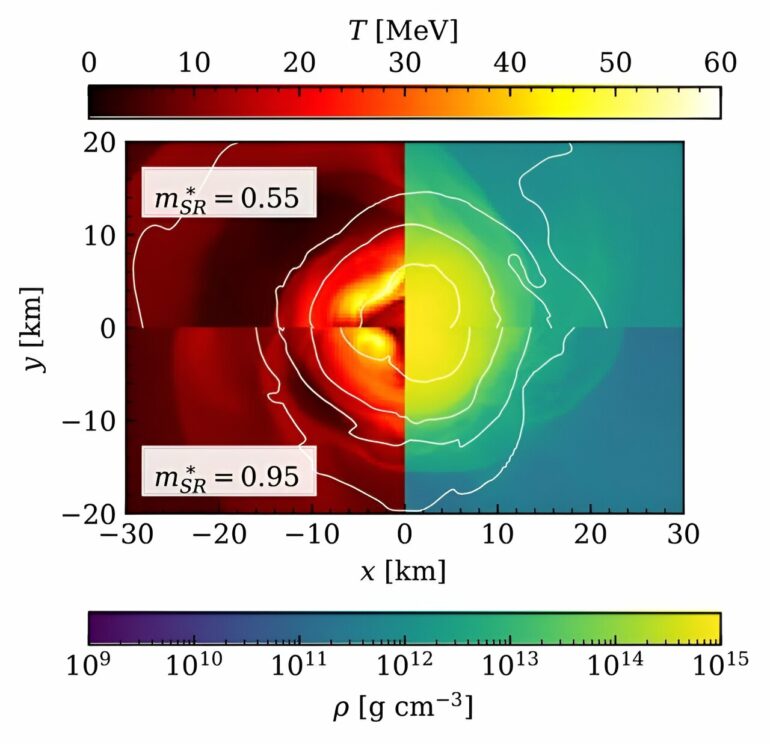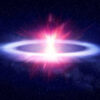In a study published in The Astrophysical Journal Letters, researchers examined neutron star mergers using THC_M1, a computer code that simulates neutron star mergers and accounts for the bending of spacetimes, due to the strong gravitational field of the stars, and of neutrino processes in dense matter.
The researchers tested thermal effects on the merger by varying the specific heat capacity in the equation of state, which measures the amount of energy needed to increase the temperature of neutron star matter by one degree. To ensure robustness of the results, the researchers performed simulations at two resolutions. They repeated the higher-resolution runs with a more approximate neutrino treatment.
As two neutron stars orbit one another, they release ripples in spacetime called gravitational waves. These ripples sap energy from the orbit until the two stars eventually collide and merge into a single object. Scientists used supercomputer simulations to explore how the behavior of different models for nuclear matter affects gravitational waves released after these mergers. They found a strong correlation between the remnant’s temperature and the frequency of these gravitational waves. Next-generation detectors will be able to distinguish these models from each other.
Scientists use neutron stars as laboratories for nuclear matter in conditions impossible to probe on Earth. They use current gravitational-wave detectors to observe neutron star mergers and learn about how cold, ultra-dense matter behaves. However, these detectors cannot measure the signal after stars merge. This signal has information about hot nuclear matter.
Future detectors will be more sensitive to these signals. Because they will also be able to distinguish different models from each other, this study’s results suggest that upcoming detectors will help scientists create better models for hot nuclear matter.
This work used the computational resources available through the National Energy Research Scientific Computing Center, the Pittsburgh Supercomputing Center, and the Institute for Computational and Data Science at The Pennsylvania State University.
More information:
Jacob Fields et al, Thermal Effects in Binary Neutron Star Mergers, The Astrophysical Journal Letters (2023). DOI: 10.3847/2041-8213/ace5b2
Provided by
US Department of Energy
Citation:
Using gravitational waves to observe thermal effects in binary neutron star mergers (2023, December 11)



